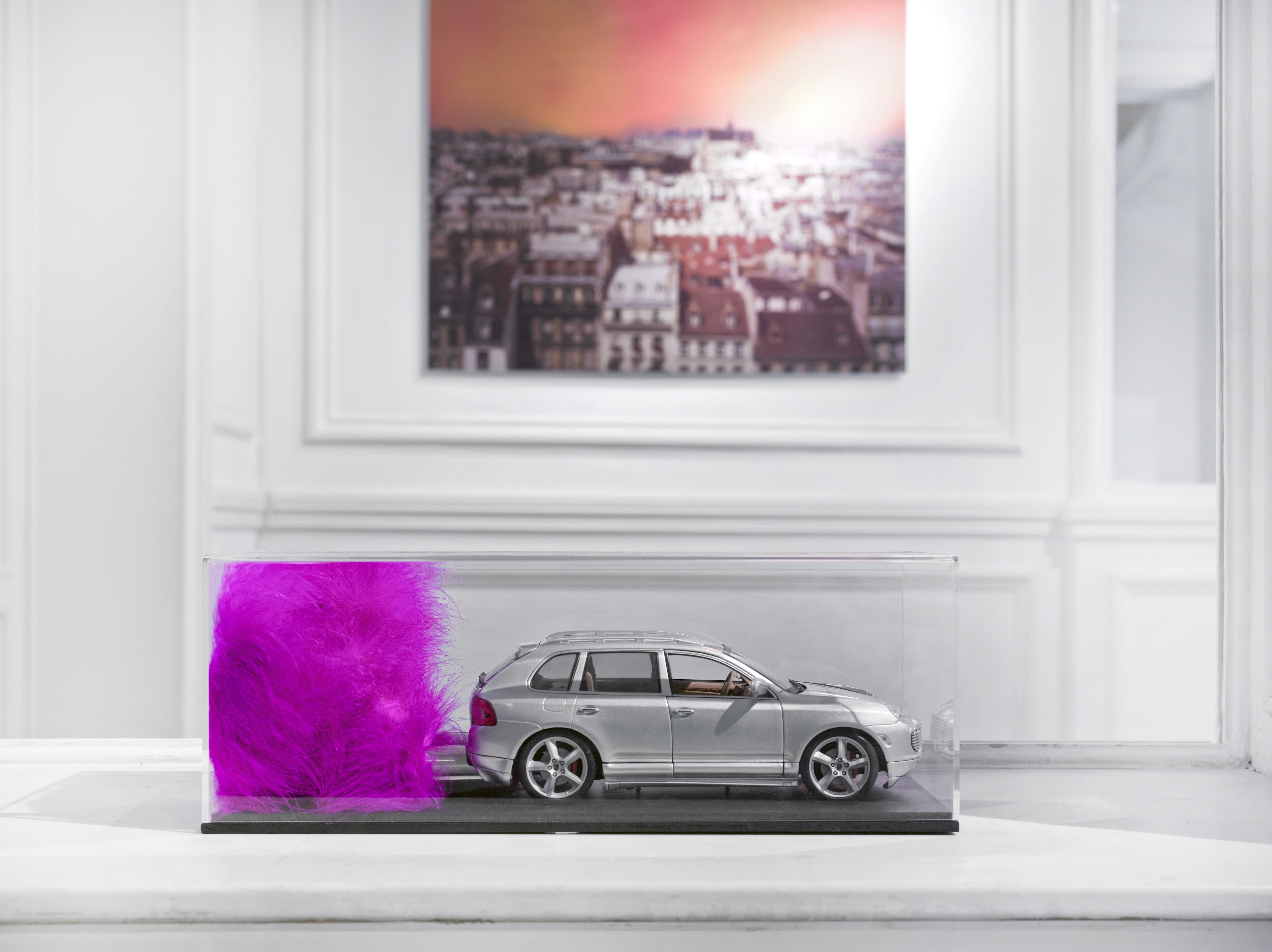
HeHe 'Antroposphere'
17 January - 15 March 2014
Aeroplastics @ Rue Blanche Str., Brussels
The duo HeHe (Helen Evans, 1972 and Heiko Hansen, 1970) personifies a new generation of artists who create a link between the sphere of technological/digital art (too self-referential, and frequented solely by the initiated), and that of contemporary art (reluctant to accept new modes of expression based on subverting new informational/communicational technologies). Each of these spheres has developed its distinct circuits of communication and 'diffusion', and common points of contact between the two remain rare. HeHe, winner of the Golden Nica at Ars Electronica (Linz) in 2008 - equivalent to the Golden Lion of the Venice Biennial for digital arts - regularly exhibit in locations dedicated to technological art, and extend their interventions into the public domain internationally (New York, Paris, Helsinki, Liverpool, …). By mounting this first personal exhibition in Belgium,Aeroplastics offers the duo the opportunity to present their work in all its complexity, and to demonstrate the contemporary relevance of the themes they study and pursue.
These themes are essentially connected to the conflictual rapport between a humanity that is caught up in an unbridled quest for new sources of energy (along with new ways of wasting it), and an ever-increasingly fragile natural environment. On the gallery's first floor, two installations illustrate recent catastrophes caused by the exploitation of the main energy resources from the industrial age: oil and nuclear energy. Is There a Horizon in the Deepwater(2011) stages the explosion of the Deepwater Horizon oil platform in 2010, while Fleur de Lys (2009), a nuclear plant plunged in an aquarium, evokes the dangers of atomic energy. Here, one naturally thinks of the Fukushima disaster in 2011, but there is also a manner of premonition: at its origin, the piece was conceived as being part of a series devoted to clouds (pollution) generated by human activity. The title Fleur de Lys harks back to the stylized form of the smoke plume emitted by the cooling tower, but also symbolically refers to France, a country 80% dependent on the atom for its energy needs.
This study of 'man-made clouds' gave rise to a spectacular performance in the public space, namely Green Cloud (2009), consisting of outlining and highlighting (by way of a directed laser beam) the fumes emitted from a power plant in Helsinki. The sociological and political implications of this project are manifold. In this vein, the prefecture of Seine-Saint-Denis prohibited Green Cloud being projected against the incinerator at Saint-Ouen, arguing that such would contribute "to propagating, in the public's mind, a strongly negative image of the incinerator plant"… And because pollution is only rarely visible to the naked eye: with a series initiated at the Centre Pompidou (Air de Paris), HeHe proposed to make visible the (mediocre) quality of the air we breathe via coloured photographed urban panoramas. Air de Bruxelles was made especially for this exhibition; the fixed image doubles as an under-construction internet site aimed to archive (in real time) atmospheric conditions as recorded by various sensors - or how landscape joins up with that of digital networks.
Naturally, every actor carries his or its own responsibility in this state of affairs. And although they defend against passing judgment on whomever, preferring the mise en scène (oftentimes humorous) to moralising, the HeHe pair don't miss targeting the current aberration of automobile traffic (particularly 4X4's) in city-centres (for that matter, HeHe is very active in projects to bring back alternative forms of public transport on the old Parisian intra mural railway line). The Porsche Cayenne, outsized, with its 189 grams per kilometre of CO2, is a perfect illustration. Launched in a miniature model producing a pink cloud through the streets of New York (Toy Emissions, 2007), and dressed up with a feather of the same colour (Porsche's Plume, 2011), it has nonetheless to take on competition from the Land Rover Discovery (269 g for the V6 Supercharged model), above all in its spatial variant (Beckham's one-way ticket to the moon edition, 2013)… And it isn't even necessary to drive a car in order to pollute. The simple fact of existing is sufficient: Million Parts (2008) converts the CO2 emitted by our human organism into modulated light within an enclosed space. "The set-up induces CO2 levels that surpass internationally accepted norms for enclosed spaces, indeed high enough for a last gasp!"
Finally, the series "Domestic Catastrophes" focuses on the pollution generated by objects we use in our daily lives, deliberately targeting the simplest among them (pointless to once again raise the question of cell phones or computers, regularly treated in the media): a wall-socket suddenly producing smoke that engulfs the room (Prise en charge, 2011), while a clothes iron, suspended from the ceiling, turns furiously in the air while belching jets of steam. Sometimes, a rise in the collective consciousness results in laws banning toxic substances from everyday life: for those who've forgotten what a room full of smokers smells like, HeHe have produced a delicate fragrance based on organic tobacco, Tobacco Perfume (2010). As for those who judge such laws to be anti-libertarian, they are invited to grill a cigarette under the Smoking Lamp (2005): their act will not go unnoticed…
- Pierre-Yves Desaive

